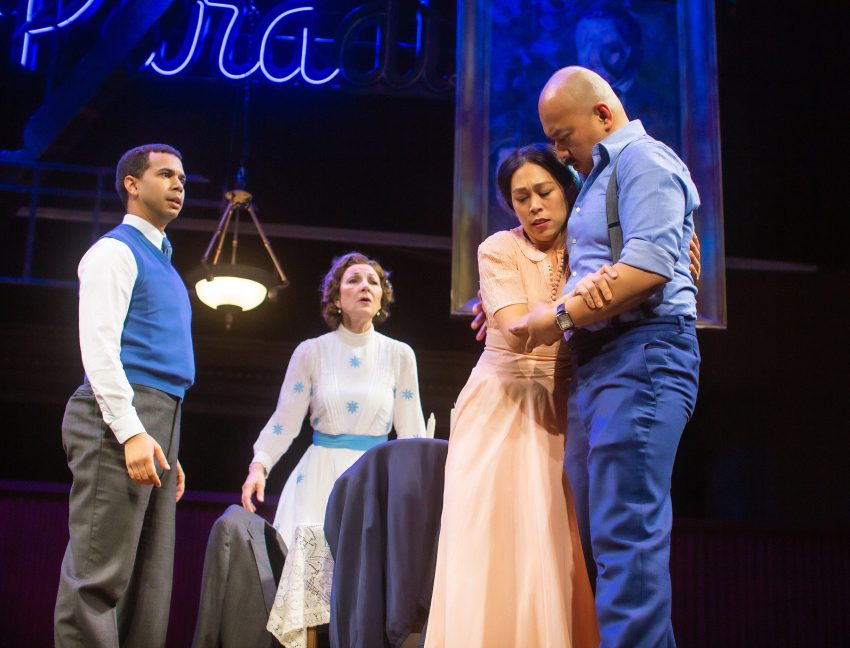
“The Glass Menagerie” Shines Light on Struggling 30s Family—at S.F. Playhouse
Tennessee Williams Reflects American Memories & Dreams
by Lynne Stevens
Tennessee Williams’ “The Glass Menagerie” came to the stage in 1944. He called it “a memory play” because it recalls life in a Saint Louis apartment with his demanding mother and painfully shy sister during the 30s.
Director Jeffrey Lo’s wide-open staging blends inside and outside, public and private spaces. We see Tom Wingfield (earnest, engaging Jomar Tagatac) stepping down from the elevated stage to smoke and talk to us—Tom’s futile attempt to escape his mother’s harping. Lo has Tom Wingfield always on view, quietly slipping to center to offer a light or a cushion to his mother or sister—dutifully at their service.
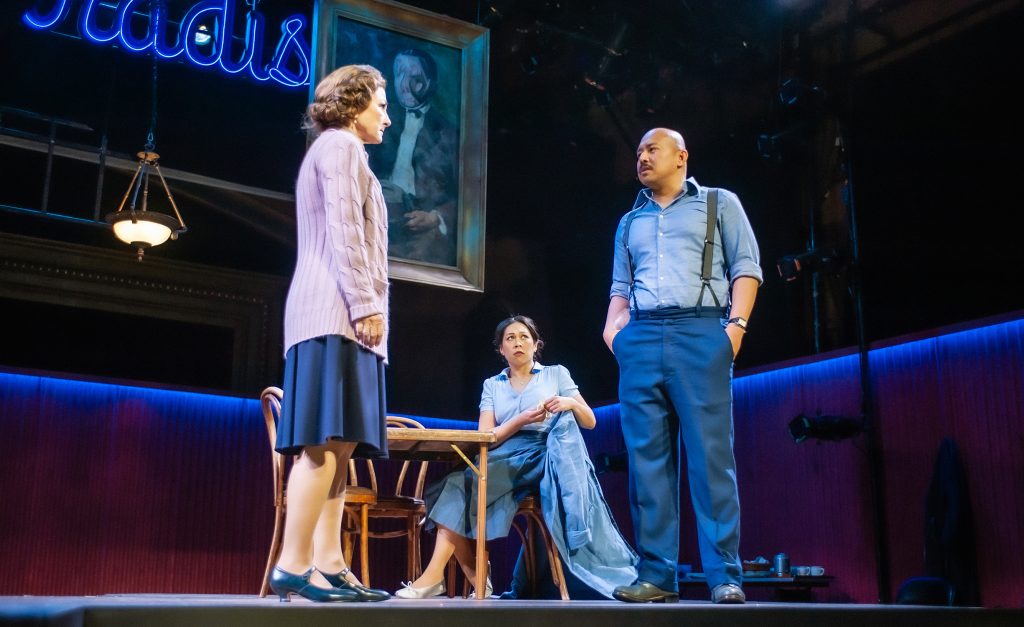
As Tom, Tagatac sets the tone as he movingly describes the world of the 30s: “In Spain there was Guernica. Here there were disturbances of labor, sometimes pretty violent, in otherwise peaceful cities such as Chicago, Cleveland, Saint Louis . . .” Tom, too, is struggling for his independence. Tom works in a warehouse for low wages and wants to be a writer—as did the young Tennessee Williams. In that time of crisis, we see Williams immortalizing his troubled family.
The Playhouse’s round-table stage exposes the Wingfields’ back-alley apartment to our scrutiny. But it sometimes distracts, with Tom hopping on and off unexpectedly. Looking at what is supposed to be a cramped apartment, my eye wanders up and over the backdrop and over to the sides, where the characters await their next moment to enter. I keep wishing the apartment were more defined, offering a bird’s eye view rather than a mouse’s.
Single mother Amanda Wingfield (subtle, surprising Susi Damilano) is a faded southern belle who betrays her racist attitudes. Insisting on serving her son, she asserts, “You sit down. I’m going to be the colored boy today and you’re going to be the lady.” Lo uses color blind casting to bring sharp focus to the racist undertones.
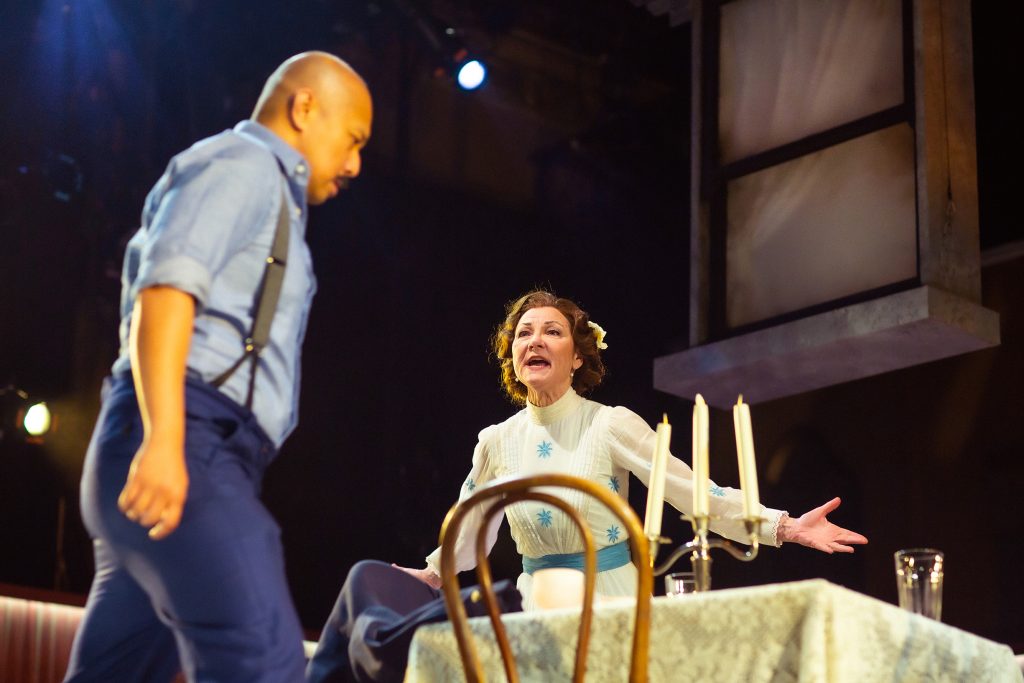
Relishing the role of Amanda, Damilano sashays coquettishly as she shows Laura how to disguise her limp. When the Gentleman Caller finally appears, Amanda flirts shamelessly, reveling in her seductive Southern accent. Amanda lives in a world of illusion; but paradoxically she wants only the best for her children—while she continually browbeats Tom. He cannot get a moment to himself to write without Amanda looking over his shoulder, correcting his posture.
Damilano depicts a sad, frightened, and lonely mother, scraping to keep her family together by selling magazine subscriptions. Amanda’s suffocating hold on her paralyzingly shy daughter Laura (Nicole Javier) is painful to watch. Laura, like the unicorn in her glass menagerie, becomes her injury. Javier convincingly plays the odd one out, unable to overcome her deep fears.
Tom keeps secrets, stays out late at night “at the movies”—his mother has no idea that he is gay. Tagatec scribbles on notepads, flinging the pages. This Tom flirts subtly with Jim as they lie on the circling sofa.
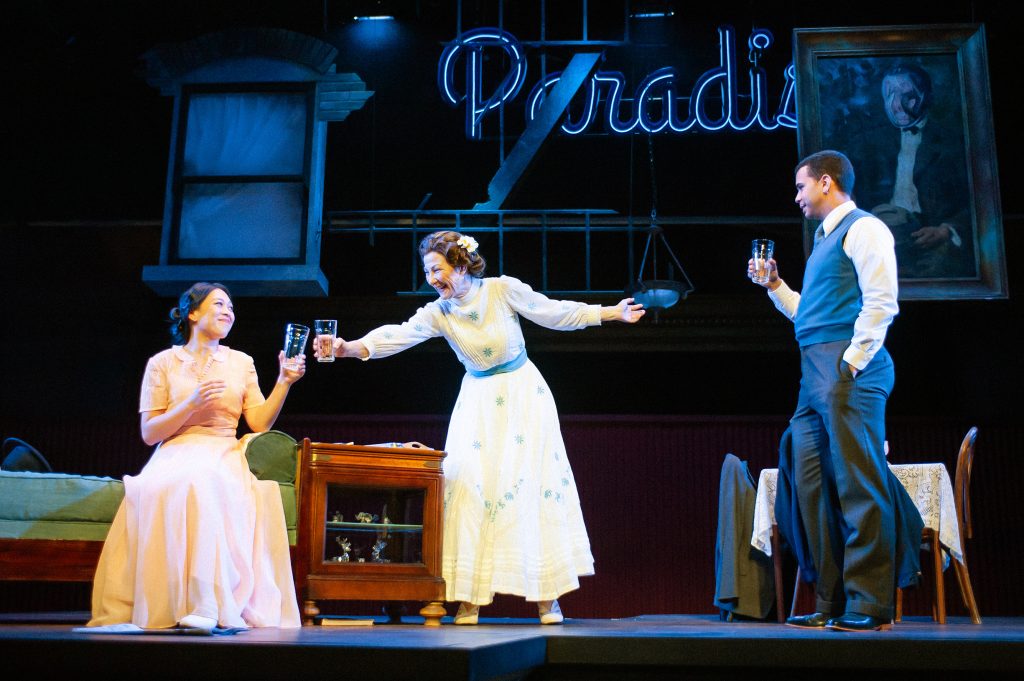
As Jim, Tom’s buddy from the warehouse, William Thomas Hodgson brings humor and charm to the former high school hero. Invited to dinner at the Wingfield’s, Jim treats Laura with kindness—a sweet second act duet. As Jim, Hodgson provides essential comic lightness.
Lo’s “Menagerie” reveals the heart of each character, heralding Tennessee Williams’ birth as a great American playwright.
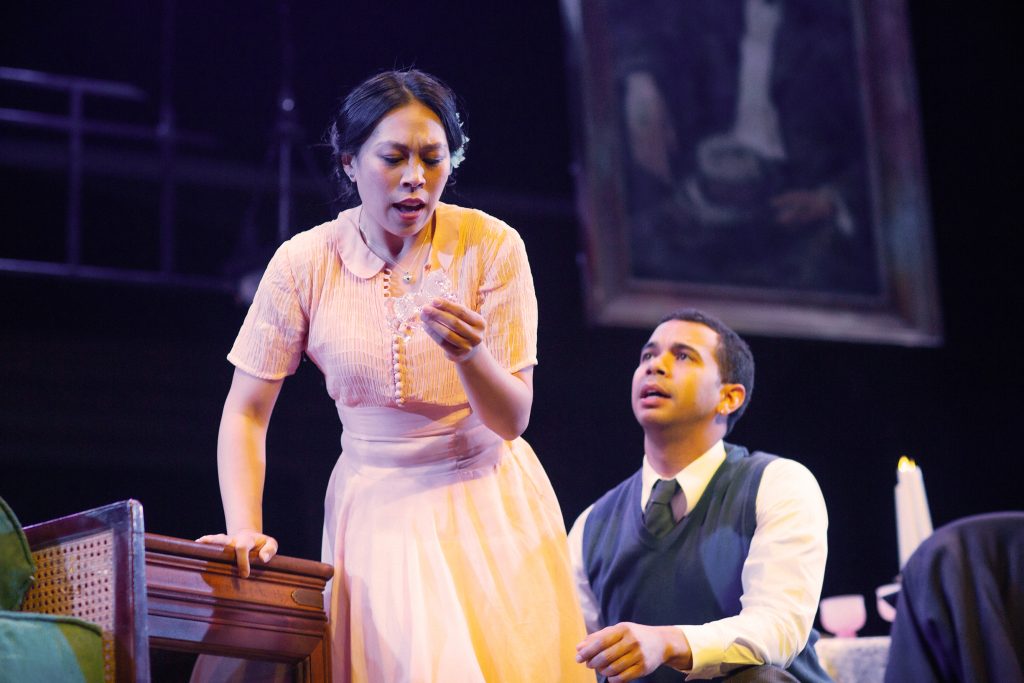
“The Glass Menagerie” by Tennessee Williams, directed by Jeffrey Lo, set designed by Christopher Fitzer, costumes by Sarah Niamh Nietfeld, lighting by Wen-Ling Liao, sound by James Ard, at San Francisco Playhouse. Info: sfplayhouse.org – to June 15, 2024.
Cast: Susi Damilano, William Thomas Hodgson, Nicole Javier, and Jomar Tagatac.
Banner photo: William Thomas Hodgson, Susi Damilano, Nicole Javier, & Jomar Tagatac. Photos by Jessica Palopoli